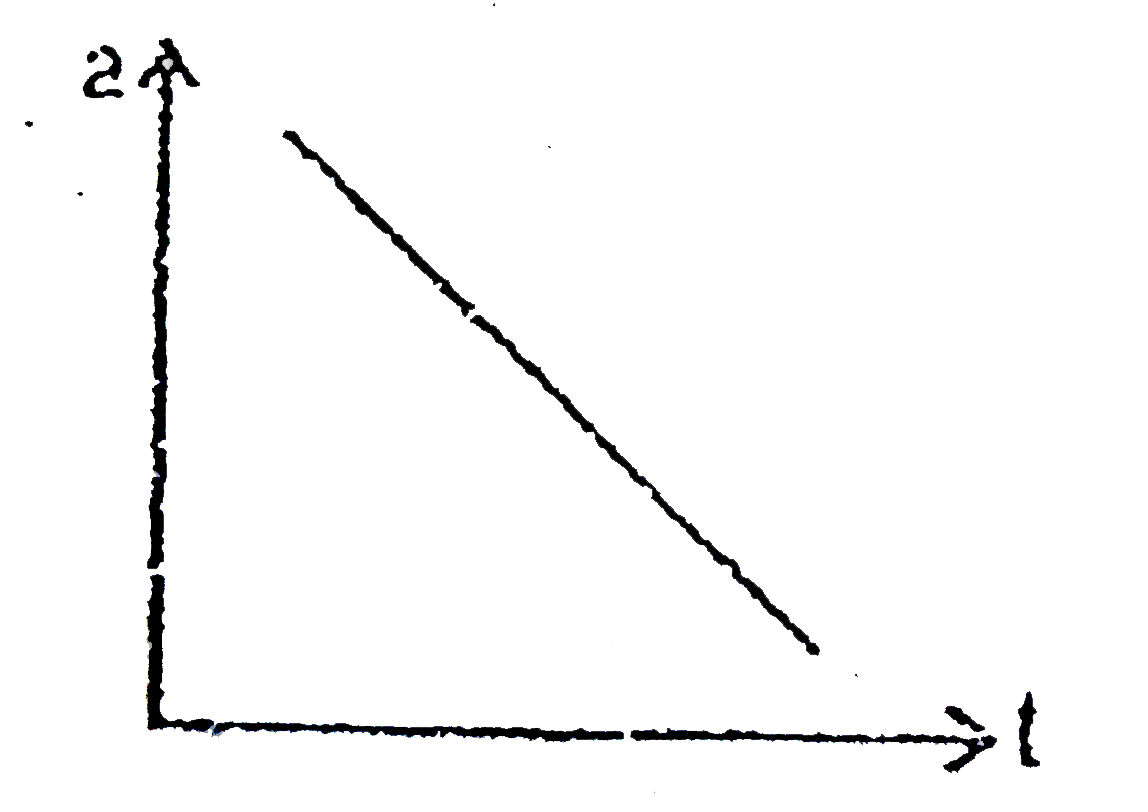Assertion : Speed of a particle may decrease, even if acceleration is increasing.
Reason: This will happen if acceleration is positive.
If the both Assertion and Reason are true and the Reason is correct explanation of the Assertion.
If both Assertion and Reason are true but Reason is not the correct explanation of Assertion.
If Assertion is true, but the Reason is false.
If Assertion is false but the Reason is true.
The correct Answer is:C
To solve the question, we need to analyze the assertion and the reason provided.
1. Understanding the Assertion:
- The assertion states that "the speed of a particle may decrease, even if acceleration is increasing."
- This means that even if the magnitude of acceleration is increasing, the speed of the particle can still decrease.
2. Understanding the Concept of Acceleration:
- Acceleration is defined as the rate of change of velocity. It can be positive or negative.
- If acceleration is positive, it typically means that the velocity is increasing in the positive direction. However, if the velocity is negative (meaning the particle is moving in the opposite direction), a positive acceleration will actually decrease the speed of the particle.
3. Analyzing the Reason:
- The reason states that "this will happen if acceleration is positive."
- This is misleading because while positive acceleration usually increases speed, if the particle is already moving in the negative direction (negative velocity), a positive acceleration will decrease the speed.
4. Conclusion:
- The assertion is true because speed can decrease if acceleration is acting in the opposite direction to the velocity.
- The reason is false because it incorrectly states the condition under which the speed can decrease.
5. Final Answer:
- The assertion is true, but the reason is false. Therefore, the correct answer is that the assertion is true and the reason is false.
- The assertion states that "the speed of a particle may decrease, even if acceleration is increasing."
- This means that even if the magnitude of acceleration is increasing, the speed of the particle can still decrease.
- Acceleration is defined as the rate of change of velocity. It can be positive or negative.
- If acceleration is positive, it typically means that the velocity is increasing in the positive direction. However, if the velocity is negative (meaning the particle is moving in the opposite direction), a positive acceleration will actually decrease the speed of the particle.
- The reason states that "this will happen if acceleration is positive."
- This is misleading because while positive acceleration usually increases speed, if the particle is already moving in the negative direction (negative velocity), a positive acceleration will decrease the speed.
- The assertion is true because speed can decrease if acceleration is acting in the opposite direction to the velocity.
- The reason is false because it incorrectly states the condition under which the speed can decrease.
- The assertion is true, but the reason is false. Therefore, the correct answer is that the assertion is true and the reason is false.
Topper's Solved these Questions
- BOOK - DC PANDEY ENGLISHCHAPTER - KINEMATICSEXERCISE - Objective45videos
KINEMATICS
- BOOK - DC PANDEY ENGLISHCHAPTER - KINEMATICSEXERCISE - Subjective50videos
KINEMATICS
- BOOK - DC PANDEY ENGLISHCHAPTER - KINEMATICSEXERCISE - Exercise 6.96videos
KINEMATICS
- BOOK - DC PANDEY ENGLISHCHAPTER - GRAVITATIONEXERCISE - (C) Chapter Exercises45videos
GRAVITATION
- BOOK - DC PANDEY ENGLISHCHAPTER - KINEMATICS 1EXERCISE - INTEGER_TYPE15videos
KINEMATICS 1
Similar Questions
The acceleration will be positive in .
 View Solution
View SolutionAssertion:- A particle is moving in a circle with constant tangential acceleration such that its speed v is increasing. Angle made by resultant acceleration of the particle with tangential acceleration increases with time.
Reason:- Tangential acceleration =∣∣∣d→vdt∣∣∣ and centripetal acceleration =v2RView Solution
Knowledge Check
- Question 1 - Select One
Assertion : For a particle, acceleration-time graph gives the velocity.
Reason : Rate of change of velocity is acceleration.AIf both assertion and reason are trure and reason is the correct explanation of assertion.BIf both assertion and reason are true but reason is not the correct explanations of assertion.CIf assertion is true but reason is false.DIf both assertion and reason is false
Assertion :− A particle has positive acceleration it means that its speed always increases.
Reason :−Acceleration is the rate of change of speed with respect to time.View SolutionThe speed of a particle moving in a circle is increasing. The dot product of its acceleration and velocity is
View SolutionThe acceleration time graph of a body moving in a straight is shown in figure.

Assertion :− Velocity of the body is continously increasing over the time interval shown.
Reason :− Acceleration is positive for all shown value of t.View SolutionAssertion : We know the relation a=v.dvds . Therefore, if velocity of a particle is zero, then acceleration is also zero.
Reason : In the above equation, a is the instantaneous acceleration.View SolutionFor a particle moving in straight line with increasing speed the appropriate sign of acceleration a and velocity v can be:
View SolutionAssertion: A uniform circular motion is an acceleration motion.
Reason: Direction of acceleration is parallel to velocity vector.View SolutionAssertion: A particle follows only a parabolic path if acceleration is constant.
Reason : In projectile motion path is parabolic, as acceleration is assumed to be constant at low heights.View Solution

